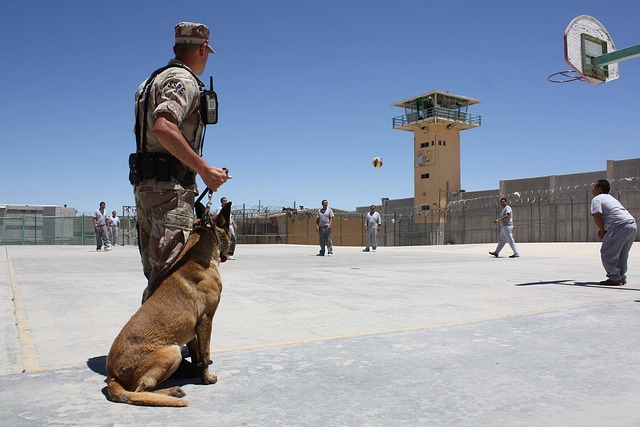Non-traditional transit options like autonomous vehicles, high-speed rail, and shared mobility services are reshaping urban landscapes globally. Smart traffic management systems and pedestrian-friendly planning enhance safety. Global Immigration and DUI perspectives influence alternative transport security, with varying laws impacting travelers. Strict regulations align with enhanced road safety measures. AI and IoT technologies optimize traffic flow, predict congestion, and improve accident response. Encouraging bike-sharing or pedestrian walkways addresses health and safety concerns, benefiting immigrants unfamiliar with local driving cultures.
In today’s globalized world, exploring alternative transit options is essential for navigating urban landscapes. This article delves into innovative solutions enhancing safety in diverse transportation contexts. We examine international insights on non-traditional transit methods, analyzing their impact on public health and safety. With a focus on Global Immigration and DUI perspectives, we compare international laws and highlight effective strategies to reduce road risks. Leveraging technology, we explore how digital advancements can foster safer commuting environments worldwide.
- Exploring Non-Traditional Transit: Global Insights
- Immigration Policies and Alternative Transport Safety
- DUI Laws: International Comparisons and Safe Options
- Innovative Solutions for Safer Commuting Worldwide
- The Role of Technology in Reducing Road Risks
- Promoting Alternative Transit: Public Health and Safety Perspectives
Exploring Non-Traditional Transit: Global Insights

The exploration of non-traditional transit options is a global trend gaining momentum, especially in light of evolving urban landscapes and shifting perspectives on mobility. Many cities around the world are embracing innovative transportation solutions to cater to diverse needs and address challenges such as traffic congestion, air pollution, and public safety. For instance, countries with robust Global Immigration and DUI Perspectives have integrated advanced technologies like autonomous vehicles, high-speed rail networks, and shared mobility services into their transportation infrastructure.
These alternative transit systems not only enhance efficiency but also promote sustainability by reducing carbon emissions. Moreover, they offer enhanced safety features compared to traditional modes of transport. From smart traffic management systems that optimize vehicle flow to pedestrian-friendly urban planning, these global insights highlight a comprehensive approach to creating safer and more efficient transportation networks. This shift towards non-conventional transit options is reshaping the way cities move forward in terms of mobility and public safety.
Immigration Policies and Alternative Transport Safety

Global immigration policies play a significant role in shaping alternative transport safety, especially when considering International perspectives on DUI (Driving Under the Influence). With varying laws and enforcement across countries, understanding the implications for non-residents is crucial. Strict immigration regulations often coincide with stringent DUI laws, which can pose challenges for travelers who find themselves involved in traffic incidents.
In many nations, a Global Immigration and DUI agreement exists to facilitate cross-border cooperation, ensuring safer transit. These agreements promote information sharing between law enforcement and immigration authorities, enabling quicker response times during emergencies. By addressing these policies, we can enhance the overall safety of alternative transport systems, creating a more harmonious experience for both residents and visitors worldwide.
DUI Laws: International Comparisons and Safe Options

DUI laws vary significantly across countries, reflecting diverse global immigration and DUI perspectives. While many nations have stringent measures in place to deter driving under the influence, others maintain more lenient policies. Understanding these international comparisons is crucial when evaluating safe transit options. For example, countries with harsher penalties, such as mandatory jail sentences and significant fines, often aim to deter individuals from engaging in risky behavior behind the wheel after consuming alcohol or drugs.
In contrast, regions with relatively lighter punishments may offer alternative transit solutions that prioritize accessibility and safety without overly penalizing offenders. These differences underscore the importance of local legal frameworks in shaping public transportation dynamics. When considering safe transit options globally, it’s essential to recognize and respect these variations, fostering an informed approach to enhancing road safety while navigating diverse cultural and legal landscapes.
Innovative Solutions for Safer Commuting Worldwide

The world is witnessing a surge in urban populations, leading to increased traffic congestion and environmental concerns. This has prompted cities worldwide to explore innovative solutions for safer commuting, especially in light of global immigration trends and DUI (Driving Under the Influence) perspectives. One prominent approach involves smart city technologies that integrate advanced data analytics, artificial intelligence, and Internet of Things (IoT) devices into transportation infrastructure. For instance, real-time traffic monitoring systems equipped with AI can predict congestion patterns, optimize route planning, and reduce travel times, thereby enhancing road safety.
Additionally, the adoption of electric and autonomous vehicles is gaining momentum, addressing both environmental and safety issues. Electric vehicles (EVs) produce zero tailpipe emissions, contributing to cleaner air in urban areas. Autonomous vehicles, on the other hand, promise to revolutionize transportation by minimizing human error, a leading cause of road accidents. As global immigration continues to shape urban landscapes, these innovative solutions not only cater to the needs of growing populations but also offer safer transit options for everyone, reflecting a holistic approach to enhancing mobility and public safety from both international and local perspectives.
The Role of Technology in Reducing Road Risks

Technology plays a pivotal role in reducing road risks, especially with advancements in autonomous vehicles and smart transportation systems. Global immigration trends and DUI (Driving Under the Influence) perspectives highlight the need for safer alternative transit options. Integrating AI-powered sensors and cameras into vehicles enhances real-time accident detection and response, minimizing potential hazards.
Moreover, connected vehicle technologies enable instant communication between cars and infrastructure, facilitating efficient traffic management. These innovations not only improve road safety but also cater to the diverse needs of immigrants and travelers facing different DUI regulations worldwide. By leveraging technology, alternative transit options can offer more secure and reliable journeys, addressing the growing demand for safe transportation solutions.
Promoting Alternative Transit: Public Health and Safety Perspectives

Promoting alternative transit options goes beyond just offering diverse travel choices; it intertwines with public health and safety, especially in cities with high global immigration rates. As more people migrate to urban areas, ensuring safe and reliable transportation becomes a top priority for both local governments and public health officials. Alternative modes of transport, such as bike-sharing programs or enhanced pedestrian walkways, can significantly reduce traffic congestion and associated pollutants, directly impacting public health.
From a Global Immigration and DUI (Driving Under the Influence) perspective, encouraging alternative transit can play a crucial role in addressing safety concerns. By providing efficient and accessible options like dedicated bike lanes or improved public transportation, cities can potentially decrease drunk driving incidents among immigrants who might be unfamiliar with local traffic patterns. This multi-faceted approach not only promotes safer streets but also fosters better integration and quality of life for new arrivals.
In conclusion, exploring alternative transit options and implementing global best practices can significantly enhance public safety, especially considering diverse immigration policies and international DUI laws. By leveraging innovative solutions and technology, communities worldwide can reduce road risks and foster healthier commuting habits. Embracing non-traditional transit methods, coupled with public health and safety initiatives, offers a comprehensive approach to ensuring safer mobility for all. Global Immigration and DUI perspectives play a pivotal role in shaping these efforts, underscoring the importance of international collaboration and knowledge sharing.






